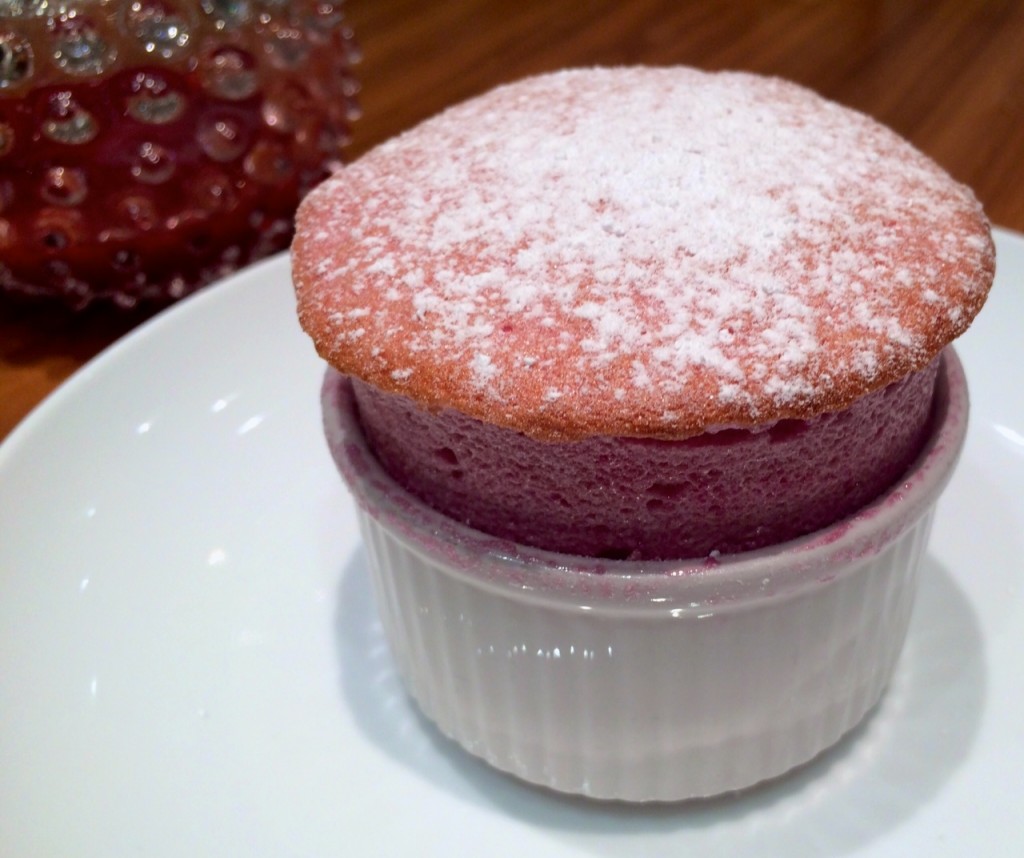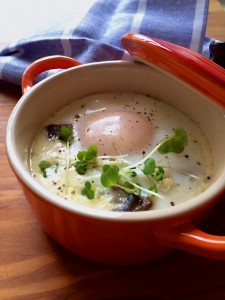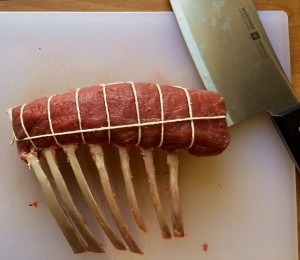Some of you may not feel confident with making soufflé, but this really is a foolproof recipe. An important point to remember is to not open the oven door during the baking process as it will make the soufflé collapse and not rise again. This makes a perfect finish to a saturday dinner with carrot and ginger soup as a starter and glazed duck as main course.
Serves 6
300 g raspberry
4 egg whites
100 g caster sugar
juice of ½ a lemon
½ tsp cornflour, mixed with 1 tbsp water
1. Butter and sugar moulds and place in the fridge.
2. Make the raspberry coulis: Heat up the raspberries, 50 g sugar, lemon and one tbsp water on the stove. Once the sugar has dissolved blend the mixture in a blender, pass through a sieve and put the mixture back on the stove. Add cornflour and bring the mixture to the boil, then take off the heat and let cool. Up until here can be prepared in advance and kept in the refrigerator.
3. To make the meringue: Whisk the egg white hard, add the remaining 50 g sugar and whisk again until smooth soft peak.
4. Mix one third of the meringue with the raspberry coulis, then add the remaining meringue and combine using a spatula to avoid knocking out the air.
5. Divide the mixture between the moulds. Smooth the surface to get an even border and run your finger along the edge to avoid the mixture from sticking and not raising properly in the oven.
6. Bake in the oven at 180 degrees C, for 10-15 minutes. Sprinkle icing sugar on top and serve immediately.



 d of the bone (but still making sure the bone is attached to the filet). Scrape the bones clean with the knife all the way to the end (this will look neater after cooking). Tie a string around the meat between each bone to keep the shape of the meat during cooking.
d of the bone (but still making sure the bone is attached to the filet). Scrape the bones clean with the knife all the way to the end (this will look neater after cooking). Tie a string around the meat between each bone to keep the shape of the meat during cooking.
 eringue and dissolving the sugar) until glossy and firm. Take the bowl off the heat and keep whisking until the meringue has cooled. Add the meringue to a piping bag and pipe the desired shape, with an extra layer on the sides so they are higher than the centre to create a cup. Bake in the oven at 130 degrees for 50 minutes.
eringue and dissolving the sugar) until glossy and firm. Take the bowl off the heat and keep whisking until the meringue has cooled. Add the meringue to a piping bag and pipe the desired shape, with an extra layer on the sides so they are higher than the centre to create a cup. Bake in the oven at 130 degrees for 50 minutes.